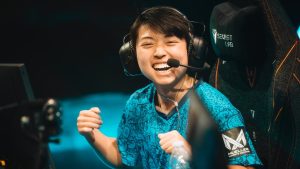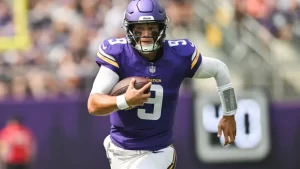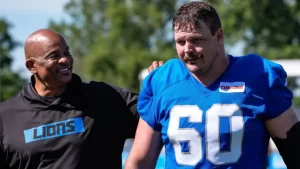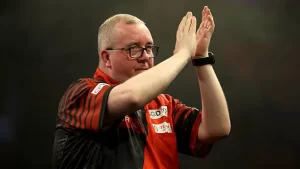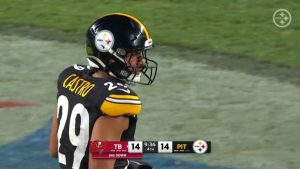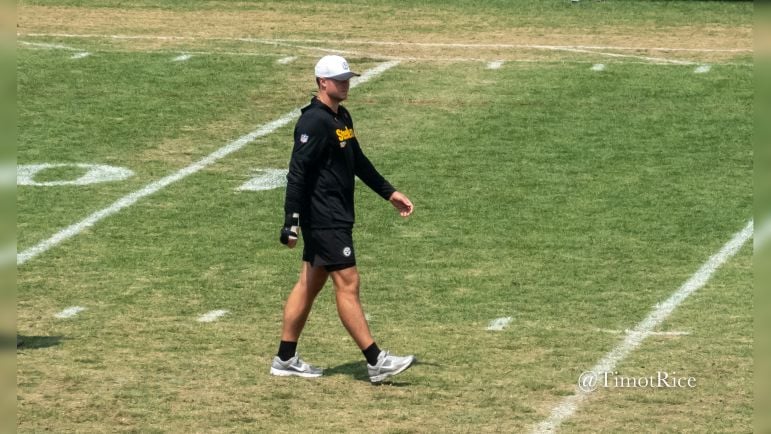
The Doctor Is In: Could Will Howard Play In 2025?
One of the biggest disappointments of the Pittsburgh Steelers’ preseason occurred before the first game when rookie quarterback Will Howard sustained a fracture on his throwing hand during an awkward exchange on a snap. Initially reported by Ian Rapoport as a fracture of a small bone in his hand, it was next described by Mike DeFabo as a broken pinky finger. In a more recent interview with Howard, DeFabo clarified the injury as a spiral fracture.
Howard did not require surgery for this fracture unlike the left wrist injury he sustained in high school. But it kept him out of all three preseason games, an opportunity that he and Steelers coaches and fans were looking forward to. A chance to see what the sixth-round draft pick and recent college national champion could do.
Instead, it was veteran backup quarterback Skylar Thompson’s chance to shine. And Howard, who has just been cleared to start throwing at practice, has a long road back to claiming the QB3 role on the Steelers’ roster. With a rumored move to IR, Howard could basically wind up with a redshirt year and not be activated until late in the season, similar to how the Steelers handled DL Logan Lee last year.
At the minimum, we won’t see Howard on the practice field until October, the earliest that any player starting the season on IR can return based on the requirement to miss at least four games.
Let’s take a look at Howard’s injury and what the typical recovery time is. As always, I have not reviewed any of his medical records or imaging reports and am basing this all on credibly reported information and published photos.
HAND ANATOMY
The skeleton of the hand is made of the small carpal bones of the wrist, the metacarpals, which are encased in muscle and form the palm of the hand, and the phalanges, which are the bones in the fingers. The metacarpals support the phalanges. Each metacarpal is composed of a head, neck, shaft and base. The head is the end of the metacarpal that articulates with the proximal phalanx. The base articulates with the bones of the wrist:
www.baxterhealth.org
WHAT IS WILL HOWARD’S INJURY?
When you hear “pinky finger,” it’s logical to assume that the broken bone is in one of the phalanges – the bones that make up the three segments of the finger. That is not actually the case here. With any fracture, the purpose of a splint or brace is to immobilize the joints around the fracture to prevent movement of the broken bone, keeping it aligned in the normal anatomic position. Howard was seen wearing a brace on his right hand at practice and games following the injury:
You can get a better view here, as Howard takes a selfie with fans prior to the game at Jacksonville just a few days later. He was able to use his right hand in limited fashion to sign autographs as well. Here is a view of him on the sideline that night.
If he had a broken phalanx, the brace would need to immobilize his fifth digit entirely. His fingers are all free to move in this brace, which is covering his palm, his wrist, and the base of his fingers at the metacarpal-phalanx joint. Based on that, we can assume the bones in his pinky finger are not involved and it is the fifth metacarpal that was fractured.
Another safe assumption is that the fracture is non-displaced, meaning that the separate ends of the bone are still properly aligned. A displaced fracture typically requires surgery with placement of a wire or a plate to stabilize the alignment.
WHAT TYPE OF FRACTURE DOES WILL HOWARD HAVE?
Metacarpal fractures account for 40 percent of all hand fractures, and fifth metacarpal fractures make up 20 percent of all hand fractures. Half of these are Boxer’s fractures, a fracture of the neck of the fifth metacarpal, named for the mechanism of trauma from contact with a closed fist. A spiral fracture is a diagonal break in the bone, often due to a twisting motion:
www.boa.ac.uk
Here is an X-ray image of a non-displaced spiral fracture of the fourth and fifth metacarpal bones of a right hand:
www.radiopaedia.org
TREATMENT
Surgical repair of a fifth metacarpal fracture is indicated for the following scenarios:
Open fracture (the broken bone disrupts the skin)
Comminuted fractures (multiple fragments of bone involved in the fracture)
Malrotation
Displacement
Neurovascular compromise (nerve or blood vessels are impacted, resulting in loss of sensation or motor function or loss of blood flow)
Surgical treatment can involve open reduction with internal fixation and closed reduction with percutaneous pinning.
If the bone is displaced by 30 percent or less, a closed reduction can be attempted to establish correct alignment and avoid surgery.
If the bone is aligned correctly, immobilization with a splint or brace is sufficient. Correct positioning of the wrist and hand is crucial to prevent loss of range of motion or function. This requires mild wrist extension with 70 to 90 degrees of flexion at the joint between the metacarpals and the phalanges and slight flexion of the joints between the individual phalanges:
www.surgeryreference.aofoundation.org
RECOVERY TIME
A review of hand and wrist injuries in NCAAF players published in the American Orthopaedic Journal of Sports medicine found that “metacarpal fractures specifically resulting in a mean of 12.3 ± 25.8 days lost from competition.” A review of upper-extremity injuries in NFL athletes from the American Journal of Sports Medicine showed that 80 percent of hand injuries were metacarpal fractures with an average of 16 days out of competition following injury.
A review of the NFL database from 2012 to 2018 published in The Journal of Hand Surgery identified 208 metacarpal fractures. For players treated non-operatively, the return to play was also 16 days with a range of six to 30 days.
Bone healing is typically monitored via X-ray performed at weekly intervals initially. Based on this, range of motion can gradually be increased. Early mobilization has been shown to limit loss of function and mobility. It would appear that Howard is making good progress based on the small and less restrictive braces he has been wearing:
It usually takes six weeks for the bone to heal adequately to resume activities that require hand strength such as gripping and throwing but based on this video posted on Aug. 25, Howard seems to be throwing again already.
Howard’s rapid progress is encouraging. It isn’t just about the bone healing though, and that is where it gets complicated. Howard isn’t a veteran returning to an offense that he expertly knows. He is a rookie who missed almost all of training camp and the entire preseason. The timing of that injury couldn’t have been worse. Skylar Thompson has shown he is more than capable to step into a game and manage the offense if needed.
For Howard, the likely result is a stint on Injured Reserve and his throwing hand could be well healed long before he comes off that list. Unfortunately, that will stunt his progress further, limiting him to meetings and mental reps without even the chance to run the scout team.
As long as Aaron Rodgers and Mason Rudolph stay healthy, Howard will have to hope that an NFL team will come calling for Skylar Thompson, clearing his own path back to the 53-man roster. Until and unless that trade materializes, Howard will likely be in limbo even once his hand is healed.
“Melanie H. Friedlander, M.D., F.A.C.S. is a doctor at Association of South Bay Surgeons in Torrance, California. Dr. Friedlander enjoys all aspects of general surgery, but her primary areas of focus are breast surgery and advanced laparoscopic surgery. She recently adopted an advanced, minimally invasive technique that reduces scar size in thyroid surgery. Dr. Friedlander is a member of the Society of American Gastrointestinal Endoscopic Surgeons (SAGES) and the Society of Laparoscopic Surgeons. She developed and published many scientific studies in highly esteemed medical journals.”






